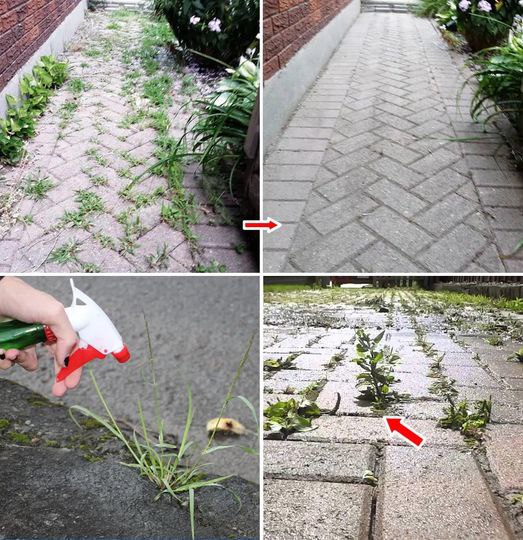ADVERTISEMENT
How to Permanently Remove Weeds from Your Patio or Garden
Weeds can be one of the most persistent and annoying garden pests. If left unchecked, they can invade your garden beds, crack through your patio, and even spread to your neighbor’s yard. But fear not! There are several effective methods for permanently removing weeds from your patio or garden without the need for harmful chemicals or expensive solutions. Whether you’re tackling small patches or a full-blown weed invasion, we’ve got you covered with practical, eco-friendly tips.
Why Weeds Keep Coming Back
Weeds are persistent because they have an incredible ability to regenerate. Their seeds are carried by the wind, animals, and even water, and they can sprout in the most unexpected places. Whether it’s the cracks between patio stones or in the rich soil of your garden, weeds find their way in. What makes them particularly tricky is that many of them have deep root systems or can reproduce through tiny root fragments, meaning a quick pull doesn’t always do the trick.
Best Methods for Permanently Removing Weeds
1. Boiling Water
One of the simplest and most cost-effective ways to get rid of weeds is with boiling water. This method is especially useful for weeds growing in cracks on your patio, driveway, or garden walkways.
How to do it:
- Bring a pot of water to a boil.
- Carefully pour the boiling water directly onto the weeds, making sure to cover the roots as well.
- This method works by scorching the weeds, causing them to wither and die. Repeated applications may be necessary for persistent weeds.
Pro tip: Be cautious not to spill boiling water on plants you want to keep, as it can harm them as well.
2. Vinegar
Vinegar is a natural herbicide that can be very effective in killing weeds. The acetic acid in vinegar draws moisture out of the weeds, causing them to dehydrate and die. This method works best for young weeds and can be especially useful for weeding your garden pathways.
How to do it:
- Fill a spray bottle with white vinegar (preferably 5% acetic acid or higher for better results).
- Spray the weeds thoroughly, making sure to coat the leaves and stems.
- You can also add a tablespoon of dish soap to the vinegar to help it stick to the leaves.
- For more stubborn weeds, a higher concentration of vinegar or repeated applications might be needed.
Pro tip: Avoid spraying vinegar on nearby plants or grass as it can harm them too.
3. Mulching
Mulch is a highly effective, natural way to block sunlight from reaching the weeds’ seeds, preventing them from sprouting. Not only will it help stop future weed growth, but mulch will also improve soil moisture and provide essential nutrients to your plants.
How to do it:
- Apply a thick layer of mulch (2-4 inches) over your garden bed or patio area. Organic mulches like wood chips, straw, or grass clippings work best.
- Make sure to mulch up to the base of your plants, but leave some space around the stems to prevent rot.
- For patios and walkways, you can use landscape fabric under the mulch to provide an additional layer of weed control.
Pro tip: Keep mulching every season to maintain its effectiveness and continue to block weed growth.
4. Hand-Pulling Weeds
Sometimes, the old-fashioned method of hand-pulling weeds is the most effective, especially for small patches or areas with sparse weeds. However, pulling weeds can be time-consuming, and it’s important to pull them out by the roots to prevent them from growing back.
How to do it:
- Use a weed puller or hand trowel to loosen the soil around the roots.
- Grasp the weed firmly and pull it up, ensuring you remove the entire root system.
- For deep-rooted weeds, make sure to dig around the base of the plant to extract the roots fully.
